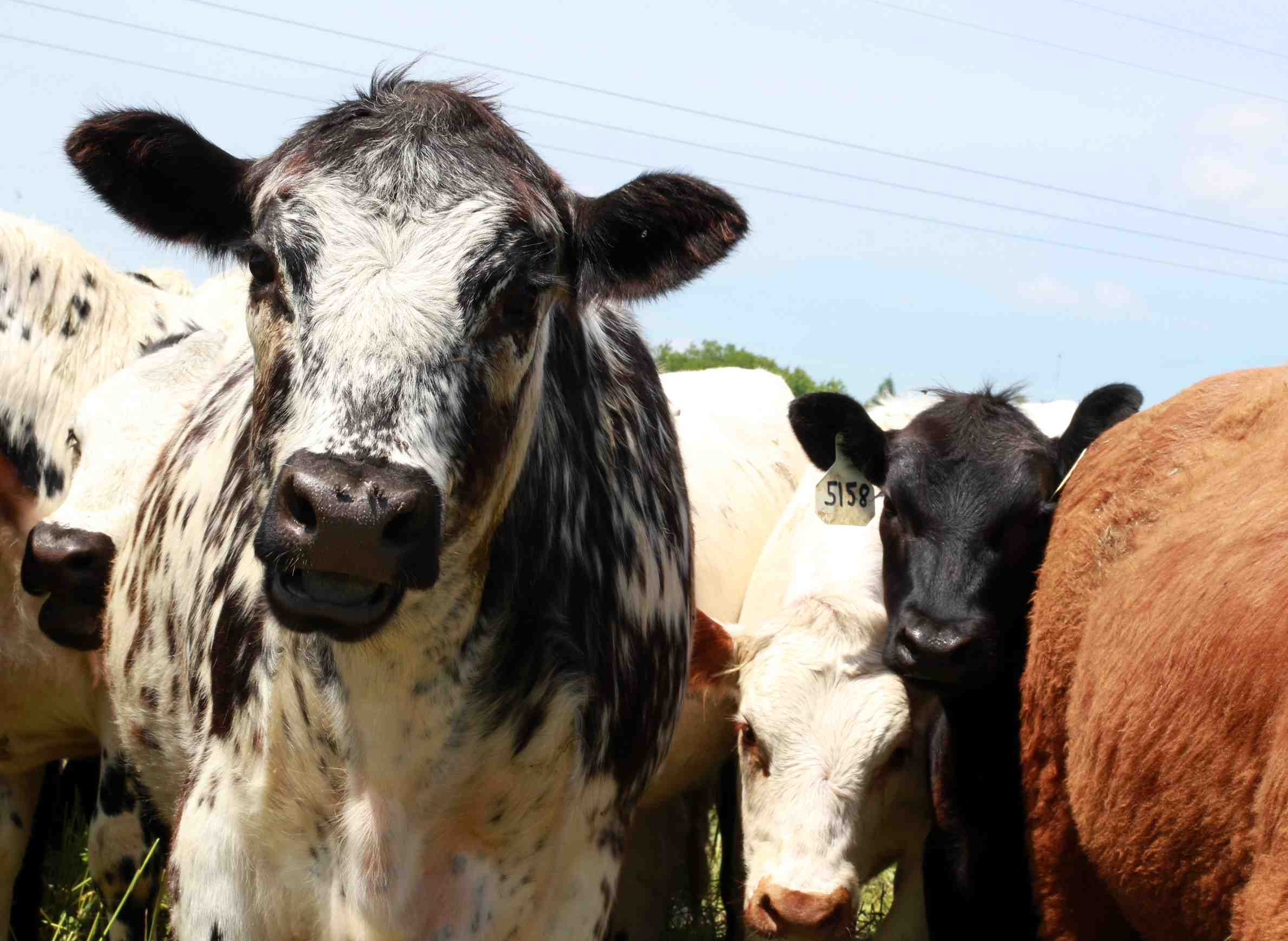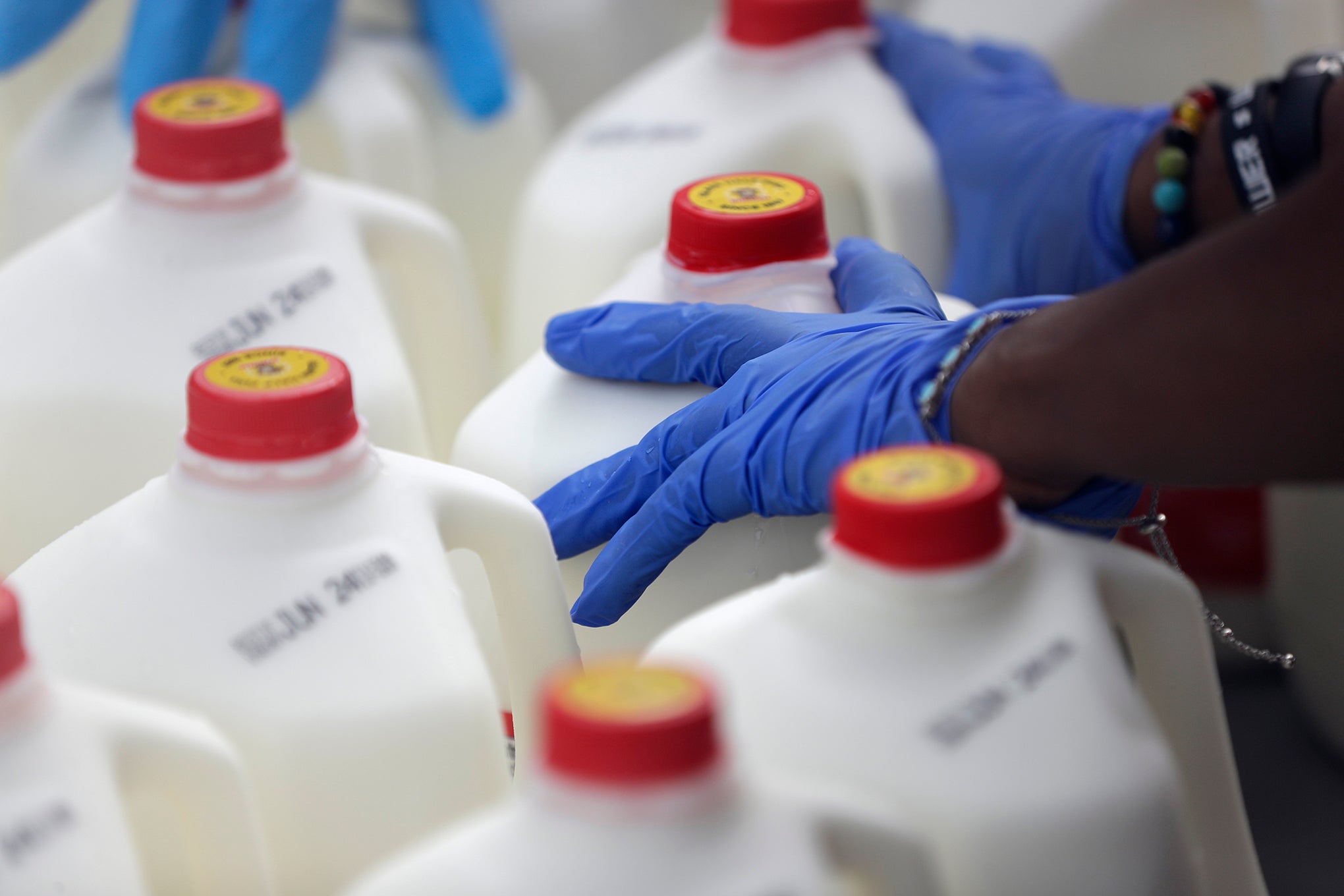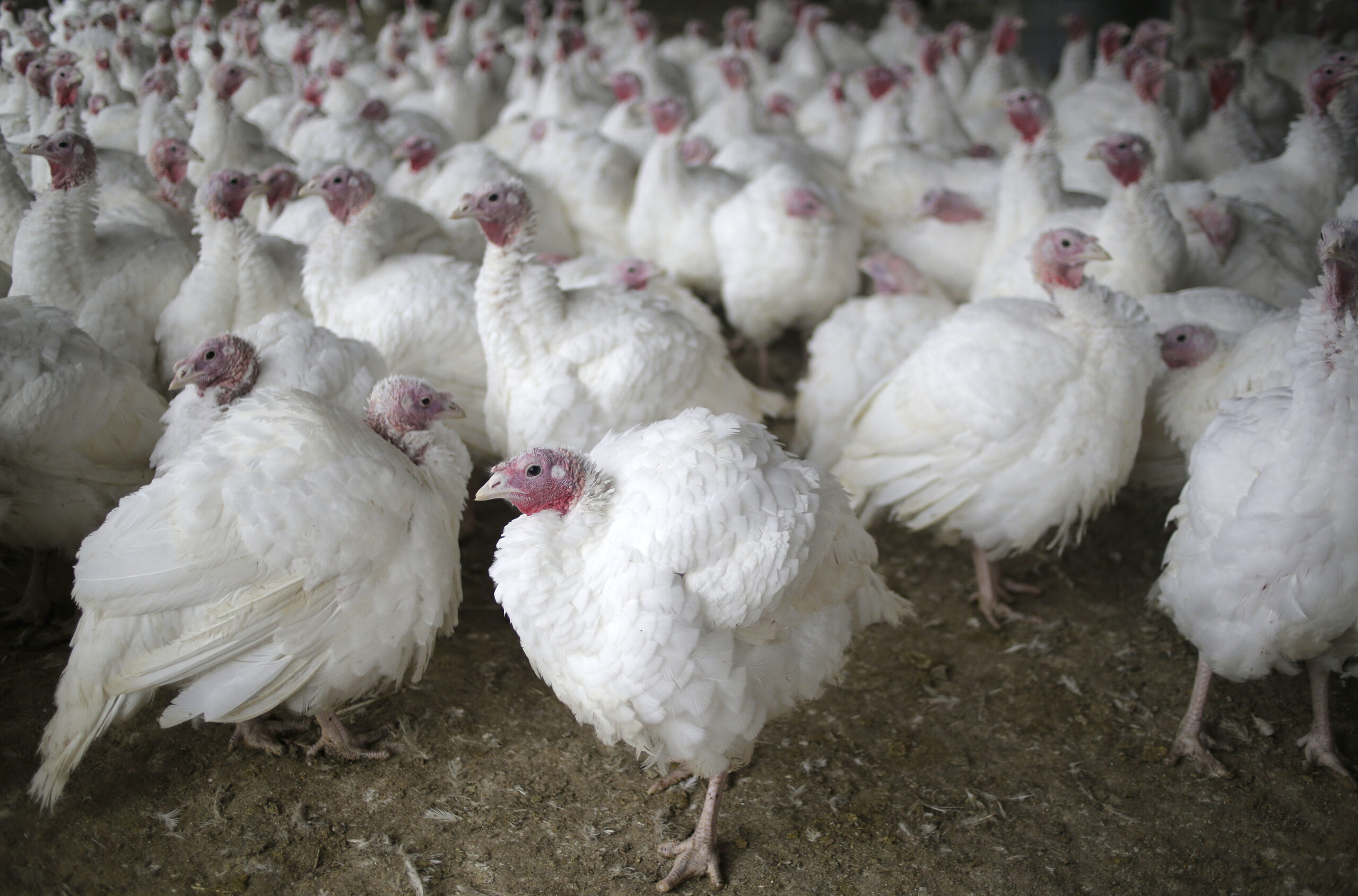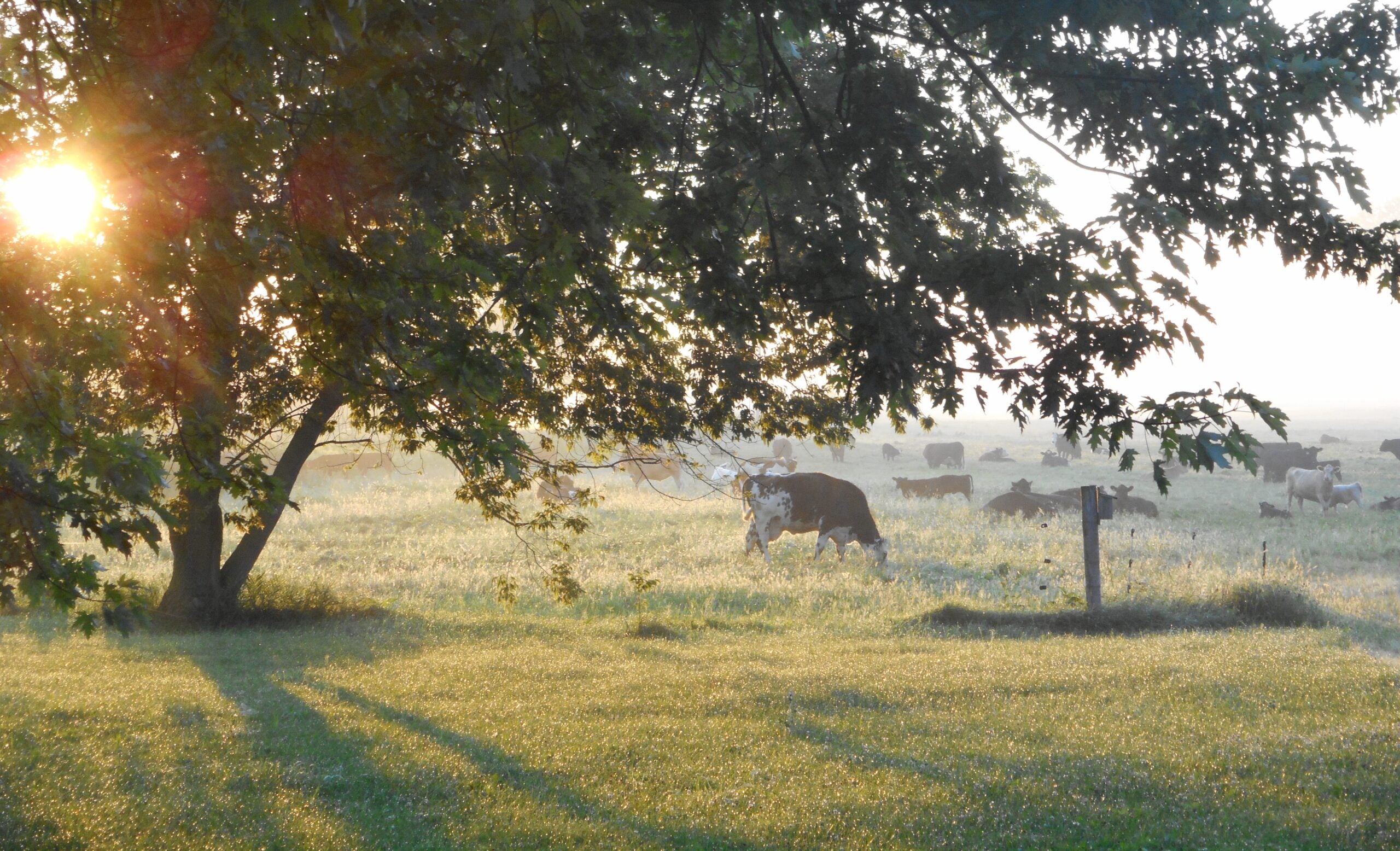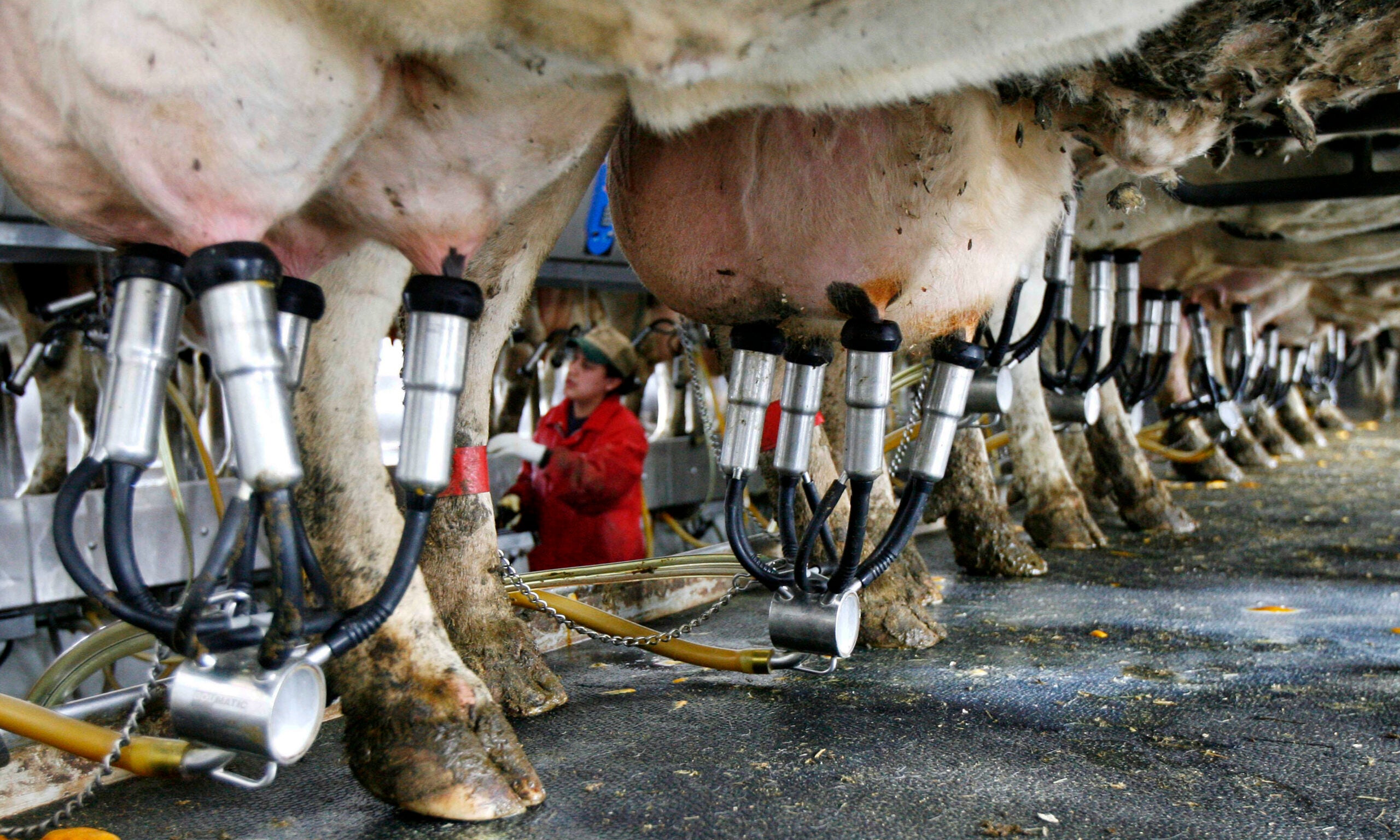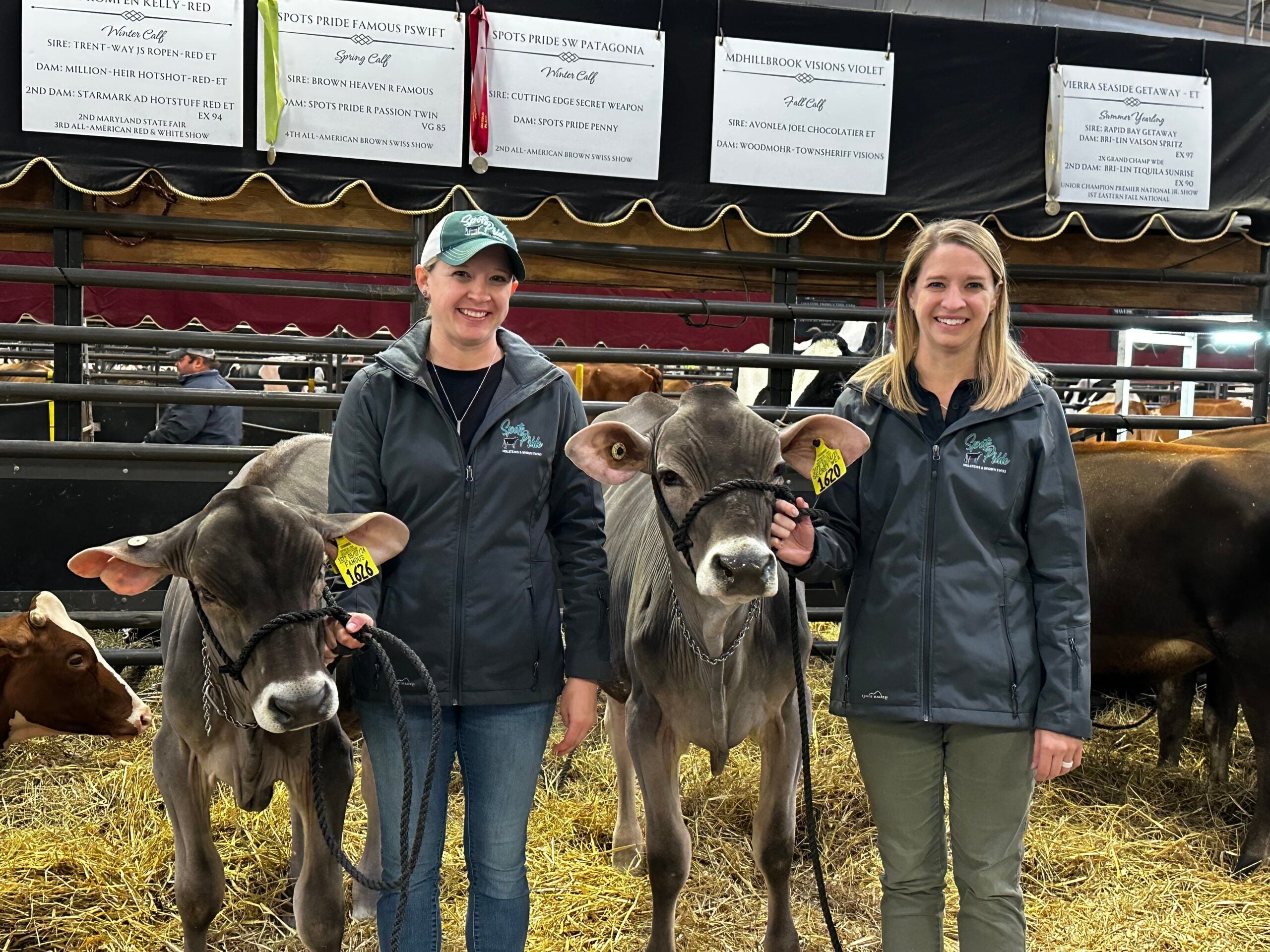As consumer interest in knowing where their food comes from continues to rise, livestock farmers are juggling the most effective ways to raise their animals that also satisfies demand for specialty products.
Farmers are motivated to sell their customers the type of meats they want, yet, some consumers may not trust or understand how their meats are raised and processed. Could the relationship between farmers and consumers be developed to address such questions?
Stay informed on the latest news
Sign up for WPR’s email newsletter.
Heidi Carroll, an extension associate at South Dakota State University, said cattle farmers should engage in a practice called “livestock stewardship,” which describes the responsibility of livestock farmers to focus on the well-being of their cattle. Carroll discussed this and the evolving relationship between farmers and consumers during a March 11, 2016, presentation at the Wisconsin Beef and Dairy Well-Being Conference, which was recorded for Wisconsin Public Television’s “University Place.“
“We have to figure out this balance of livestock stewardship of an animal, and remember that a consumer who never sees that animal alive thinks about these things when they’re purchasing the product and when they’re eating the product,” Carroll said.
Carroll, who raises cattle herself, said humans are much more complicated than livestock animals, but understanding how both interact and communicate with each other is important. When animals are raised with their well-being in mind, she said, they produce better meat for consumers.
Poor handling of animals can negatively affect factors like their growth performance, feeding behavior, cortisol responses and immune system responses, Carroll said. In turn, it can also diminish meat quality, increasing the chances of “dark cutting” and diminishing shelf life. Additionally, she noted that meat bruised by poor handling is undesirable to consumers and is typically priced lower than regular meat. Losing meat due to poor handling is not only financially irresponsible for farmers, but unethical as well, she stated.
“You’ve now lost potential food that could be fed to an increasing global population,” Carroll said. “Well, if we need to raise more food for the world and we’re throwing it away by bruising, by animals that are getting condemned because they’re too lame, we could solve some issues there.”
Carroll described how cattle farmers can address these challenges to ensure healthy animals, quality meat and a satisfied consumer base.
Communicating with their employees and customers is the first step, Carroll said. Farmers should understand their consumers and their evolving interest in the quality and sourcing of meat options. Farmers should also continue implementing new technology and practices to their craft. Settling for “the way it’s always been done” is less likely to keep up with a consumer base that is constantly fluctuating and demanding new products, she said.
“Making sure that we can improve animal well-being by being teachable, by being forward-thinking and staying on top of whatever consumers and the public is finding acceptable is important,” Carroll concluded, as is “making sure that we get those facts, making sure we stay on top of the science to support our choices on our farm.”
Key facts
- Farmers make many choices that affect the overall well-being and livelihood of their animals in areas like breeding, feed and water quality, shelter and protection, hygiene and health, travel, behavior, stress and anatomy. However, consumers decide which of these factors are important to them when it comes to the meat they purchase and consume.
- Cattle well-being can be measured through the animals’ vocalization, whether they are lame or not, how often they slip and fall during handling or the amount of chaos going on in a herd, and how they react to farmers and other humans.
- A 2014 Consumer Reports National Research Center survey found that nearly four in five consumers think that the term “humanely raised” should mean that cattle are allowed to go outdoors while being raised. Additionally, 92 percent of consumers said the term should mean a farm is inspected to verify the claim, 90 percent said it should mean the animals had adequate living space and 88 percent that the animals were humanely slaughtered.
- Technological advancements have played a role in the care of cattle. Video cameras are useful during calving season or for security purposes, rumination trackers determine an animal’s health and barn design aids in proper ventilation.
- Based on consumer desires, livestock farmers can increasingly show that they treat their animals with care through providing treatment records, withdraw times, proof of research-based management practices and quality assurance trainings.
Key quotes
- On the importance of science to animal management: “We have to understand that what we do on a daily basis now need needs to have proper regard for the rights of others. Science isn’t always pretty, but it’s necessary if we want to figure out what our best management practices is. We have to be able to use science to justify our management practices.”
- On communicating and listening to consumers: “We’re all really good about building fences. After all, we have to keep the animals in or keep the other animals out. What producers are not necessarily good at is building bridges. We don’t always learn how to communicate with somebody who doesn’t understand agriculture. You’ve all listened to … how you can share your story, but you as a producer also have a responsibility to the other producers you work with.”
- On the importance of accountability among livestock farmers: “We have to understand that us, as the person who’s interacting with those animals, is what is determining the welfare they experience … So making sure that we can improve animal well-being by being teachable, by being forward-thinking and staying on top of whatever consumers and the public is finding acceptable, and making sure that we get those facts, making sure we stay on top of the science to support our choices on our farm.”
- On respecting livestock farmers who use different management practices: “We also have to then understand how we coexist in the same industry and not paint this picture of confusion about one is better than another. We have to talk about what the cattle need. It’s kind of the point. You have to raise the animal first.”
- On the idea that most livestock is raised for food: “Yes, we eat our own cattle or you eat whatever animal you might raise and fill your own freezer, but somebody else that didn’t raise that animal will also eat it. And so those are things that are starting to become hot topics — animal well-being, animal care, lameness, managing the environment that these animals live in before they end up on our plate.”
More And Better Beef Starts With The Well-Being Of Cattle was originally published on WisContext which produced the article in a partnership between Wisconsin Public Radio, Wisconsin Public Television and Cooperative Extension.
This report was produced in a partnership between Wisconsin Public Radio, PBS Wisconsin and the University of Wisconsin Cooperative Extension. @ Copyright 2025, Board of Regents of the University of Wisconsin System and Wisconsin Educational Communications Board.
